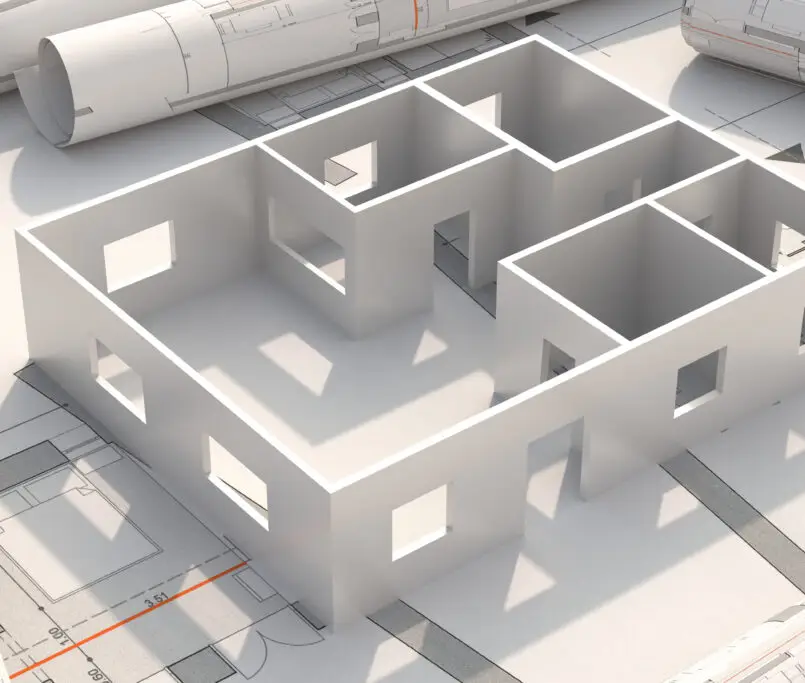BIM for Building Owners
Digital Blueprint:
BIM creates a detailed 3D model of a building or structure, offering a smarter and more interactive version of traditional blueprints.
Collaboration Tool:
It fosters collaboration among architects, engineers, contractors, and other stakeholders by centralizing all project data in one model, allowing everyone to work from the same source of truth.
Accurate Planning:
By visualizing the entire project in 3D, BIM helps in accurate planning, reducing errors during construction, ensuring smoother workflows, and improving overall project outcomes.
Cost Saving:
BIM allows for precise cost estimation, enabling better budget management and minimizing unexpected expenses by predicting potential cost overruns early on.
Time Efficiency:
With a clearer roadmap and real-time updates, BIM accelerates decision-making and project timelines, ensuring that tasks are well-coordinated and completed on schedule.
Problem Solver:
One of the most important features of BIM is its ability to detect clashes and issues (like pipes interfering
with walls) before they happen on-site, reducing costly rework.
Sustainability:
BIM helps optimize energy efficiency by analyzing environmental factors such as sunlight, airflow, and
material use, contributing to the creation of sustainable and eco-friendly buildings.
Virtual Testing:
Instead of costly physical mock-ups, BIM allows virtual testing and simulations, enabling designers to test
performance and make adjustments in a digital environment before construction begins.
Maintenance Help:
After construction, the BIM model remains useful for facility management, helping with building
maintenance, repairs, and upgrades throughout the buildings lifecycle.
Future Ready:
BIM is future-proof, supporting cutting-edge technologies like digital twins (virtual replicas of physical
buildings), AI-driven analytics, and robotics in the construction and operations phase.
- What is BIM?
BIM stands for Building Information Modeling. It’s a modern, smarter way to plan, design, and manage
buildings and infrastructure projects. Think of it as creating a virtual 3D model of a building before it is
actually built, but with more than just visuals—this model contains detailed information about every part of
the project.
Why is BIM important?
Traditionally, construction relied on 2D drawings (blueprints), but these could lead to mistakes,
miscommunication, and unexpected costs. BIM solves these problems by: - Visualizing the entire project before construction.
- Improving collaboration among architects, engineers, and contractors by sharing a single, detailed
model. - Reducing errors by identifying clashes (like pipes intersecting walls) before construction starts.
- Saving time and money by better planning, scheduling, and managing materials.
How Does BIM Work?
Imagine you’re building a house:
In BIM, you first create a digital version of the house. This isn’t just a picture but a smart model
where every part—walls, doors, plumbing, electrical systems—has detailed information.
If you change something (e.g., move a wall), the model updates automatically, and everyone working
on the project knows about the change.
This model is used throughout the project’s life—from planning and construction to maintenance
after the building is completed.
Key Features of BIM
- 3D Visualization: You can “see” the building in 3D before construction begins.
- Information Storage: Every element (e.g., doors, windows) has data, such as dimensions, materials,
and cost. - Collaboration: Multiple teams (architects, engineers, contractors) work on the same model, reducing
confusion. - Clash Detection: BIM identifies conflicts (e.g., a pipe running through a beam) early on.
- 4D and 5D BIM:
o 4D adds time (construction schedule).
o 5D adds cost (budget tracking).
Who Uses BIM?
- Architects: To design and visualize the building.
- Engineers: To ensure structural safety and design HVAC, plumbing, and electrical systems.
- Contractors: To plan construction and manage materials.
- Owners/Facility Managers: To maintain the building after construction.
Benefits of BIM for Everyone
- For Builders: Fewer errors and reduced rework.
- For Clients: Better understanding of the project, leading to informed decisions.
- For the Environment: Reduced waste and more sustainable construction.


